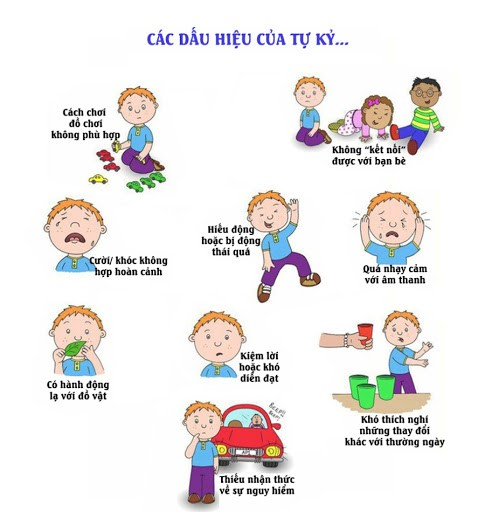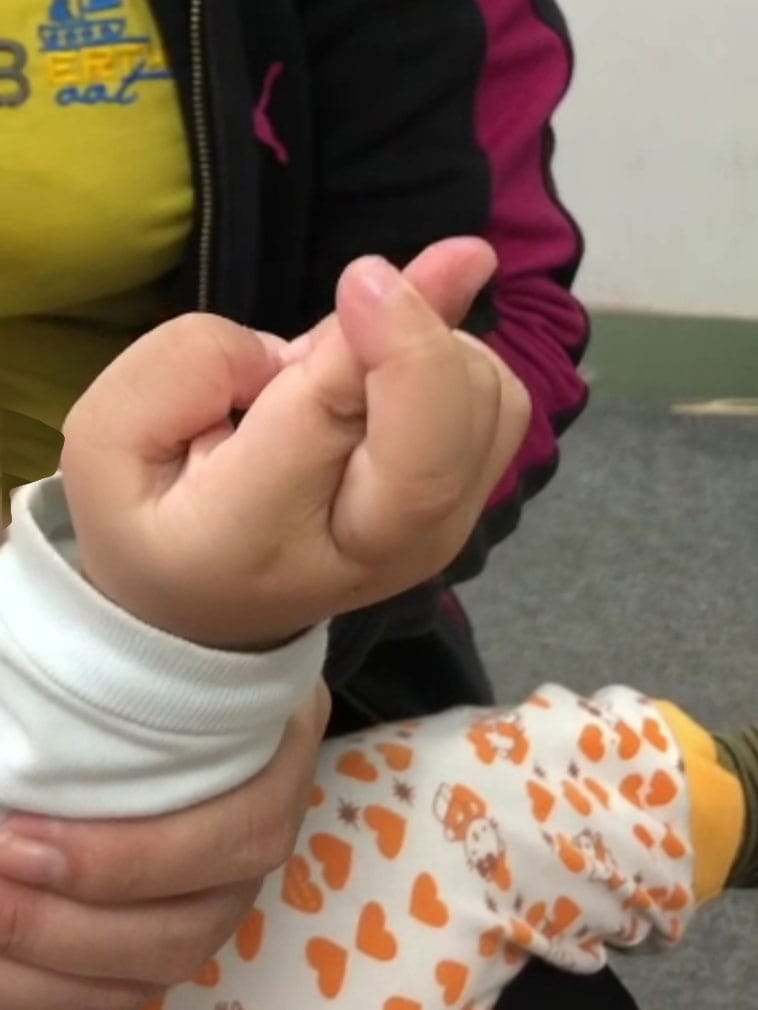In recent times, the trend of delayed speech among children has become increasingly common, which makes it difficult for them when they reach preschool or kindergarten age. Difficulty in integration and playing with peers leads to children narrowing their communication scope and becoming isolated, preferring solitary play. This raises concerns for parents, and to some extent, these children may be recognized by parents and teachers as possibly having Autism Spectrum Disorder (ASD). So how can we know if a child has autism?
1. What is Autism? What are the Causes of Autism in Children?
The term “Autism Spectrum Disorder” is used to describe various forms of autism from mild to severe. The global prevalence rate is 1 in 150, with a male-to-female ratio of 3:1.
Until now, the exact causes of autism in children have not been accurately determined. Many scientific studies indicate that several factors contribute to the development of autism in children, including:
– Genetics: About 80% of autism spectrum disorders are believed to be inherited genetically.
– Co-occurrence with certain medical conditions (fragile X syndrome, congenital rubella, etc.).
– Associated disorders: delayed intellectual development in children (50%), epilepsy (30%), attention-deficit/hyperactivity disorder (ADHD).
– Environmental factors: during pregnancy, mothers often expose themselves to harmful substances such as tobacco, alcohol, drugs, increasing the risk of autism in children after birth. Children’s frequent exposure to toxic chemicals, environmental pollution, lack of family care and attention, etc., also increase the risk of autism in children.
2. How to Early Detect Children with Autism Spectrum Disorder:
Autism is a complex neurological developmental disorder characterized by specific behavioral impairments in three areas:
– Social interaction
– Verbal and non-verbal communication
– Repetitive behaviors, stereotyped movements
When detecting abnormal behaviors in children such as limited smiling, little emotional expression towards parents, preferring solitary play, poor interaction with others, narrowed interests, repetitive behaviors… especially accompanied by severe language regression in children (children are significantly delayed in speech compared to their age or completely lose language skills), these are considered early warning signs suggesting that parents and teachers should recognize the likelihood of autism in children, especially those aged 18 months to 24 months.

– Early Warning Signs of Autism in Children under 24 Months:
+ Not babbling by 12 months old;
+ Lack of gestures showing interest in surroundings by 12 months old: pointing, waving, reaching out to touch, making eye contact, responding with smiles to familiar people…
+ Unable to say at least 1 word by 16 months old;
+ Not using 2-word phrases by 24 months old;
+ Loss of language and communication skills at any age.
3. M-CHAT (Modified-Checklist for Autism in Toddlers):
Screening for autism can help detect early signs in children as young as 18 months old, using a tool with 23 key questions to help parents self-assess whether their child may have Autism Spectrum Disorder (ASD) and to promptly take them to mental health facilities for timely intervention and therapy. The identifying questions are as follows:
1. Does your child like being swung, bounced on your knee?
2. Does your child show interest in other children?
3. Does your child like climbing on things, such as stairs?
4. Does your child enjoy playing peek-a-boo/hide-and-seek?
5. Has your child ever pretended, for example, to talk on the phone or take care of dolls… or do something else?
6. Does your child ever use his/her index finger to point, to ask for something?
7. Does your child ever use his/her index finger to point, to indicate interest in something?
8. Does your child ever play properly with small toys (e.g., cars, blocks) without just mouthing, fiddling, or dropping them?
9. Does your child ever bring objects over to you (parent) to show you something?
10. Does your child ever look you in the eye for more than a second or two?
11. Does your child ever seem oversensitive to noise? (e.g., plugging ears)
12. Does your child smile or laugh while looking at you (parent) or others, without being tickled or smiled at first?
13. Does your child ever try to imitate you (parent)? (e.g., you make a face, stick out your tongue, wave bye-bye, clap, etc.)
14. Does your child respond when you call his/her name?
15. When you point at something, does your child look at it?
16. Does your child walk?
17. Does your child ever look at things you’re looking at?
18. Does your child ever use his/her finger to point, to indicate interest in something?
19. Does your child ever bring objects over to you (parent) to show you something?
20. Does your child ever seem to hear you when you call, even if his/her back is turned?
21. Does your child ever use gestures (like waving goodbye)?
22. Does your child ever stare at nothing, or wander with no purpose?
23. Does your child look at your face to check your reaction when faced with something unfamiliar?
Parents can use these 23 questions to assess early detection of autism in children aged 18-24 months. It’s important to note: a high-risk result is when the child answers “no” to at least three questions or two key questions (numbers 2, 7, 9, 13, 14, 15). However, for questions 11, 18, 20, 22, a “yes” answer actually indicates a risk of autism.
—
References:
1. Johnson, C.P. Early Clinical Characteristics of Children with Autism. In: Gupta, V.B. ed: Autistic Spectrum Disorders in Children. New York: Marcel Dekker, Inc., 2004:85-123.
2. Paul, R. Language disorders from infancy through adolescence and assessment and intervention. St. Louis, MO: Mosby, Inc. (2001).
3. Autism largely caused by genetics, not environment: Study (2019, July 17) retrieved 18 October 2019 from https://medicalxpress.com/news/2019-07-autism-largely-genetics-environment.html.
Dr. Dinh Thac – Head of Psychology Department








